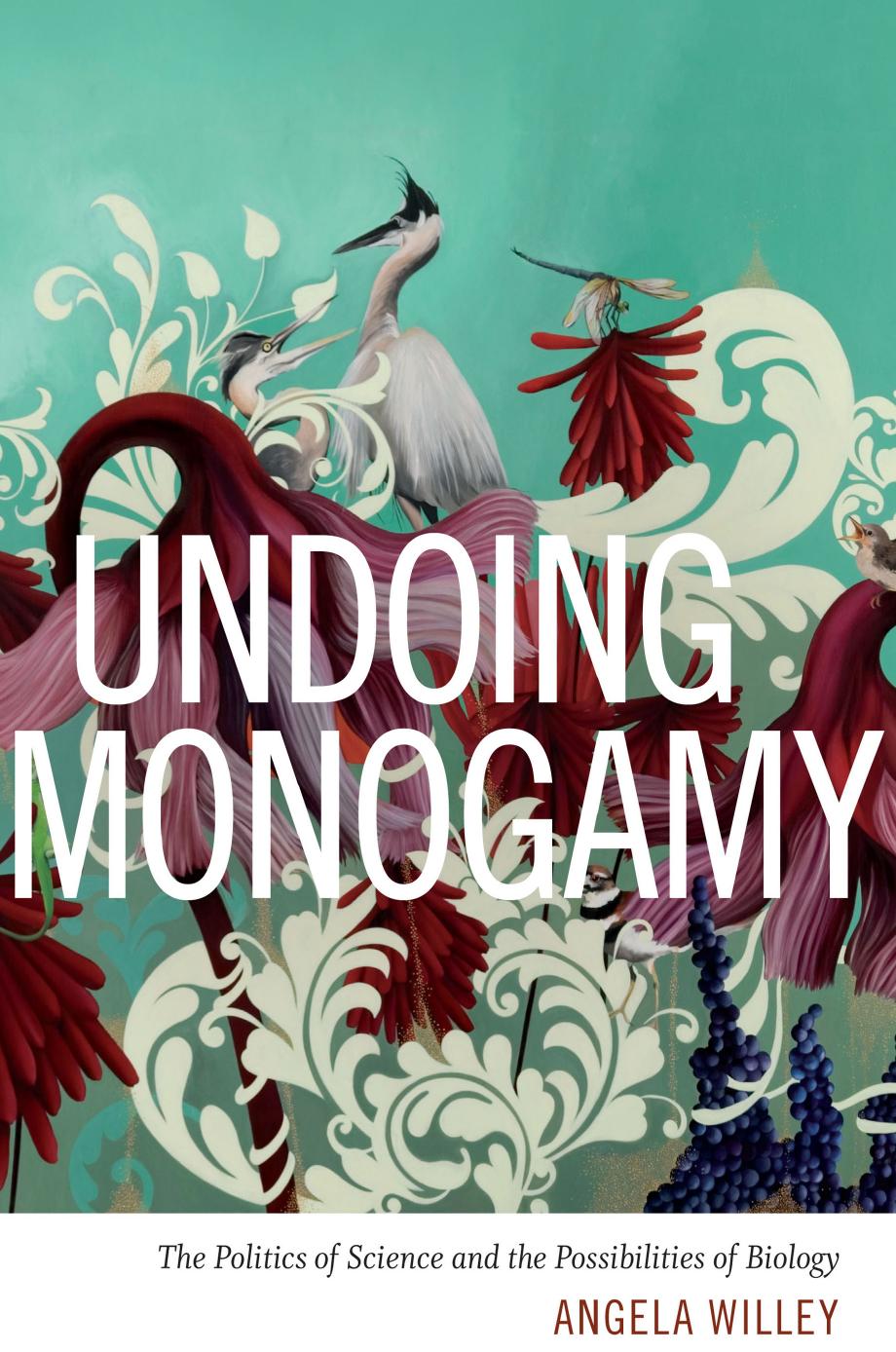Undoing Monogamy: The Politics of Science and the Possibilities of Biology by Angela Willey

Author:Angela Willey [Willey, Angela]
Language: eng
Format: epub, pdf
Tags: Social Science, sociology, Marriage & Family, Feminism & Feminist Theory, LGBTQ+ Studies, Lesbian Studies
ISBN: 9780822361404
Google: gRYcswEACAAJ
Publisher: Duke University Press
Published: 2016-05-13T00:10:11.012523+00:00
Toward a Dyke Ethics
Like Lynne Huffer in Are the Lips a Grave?, Iâm convinced that âbringing the term lesbian back into the pictureâ is vital to theorizing a queer feminist ethics of sex and social belonging.8 The embodied lesbian, fictional or not, forces us to question stories that tell us what feminist and queer desires look like, and circumscribe what a feminist or queer take on monogamy might be. Unsurprisingly, given the richness of Hufferâs archive and the iconic status of DTWOF as a uniquely and distinctly lesbian text, she draws on Bechdelâs autobiographical account of her own coming out to frame the case for reclaiming lesbian.9 Bechdelâs journey, depicted in âComing Out Story,â begins one âfateful dayâ at her collegeâs co-op bookstore and is filled, in classic Bechdelian fashion, with written texts. In between scenes at the co-op and at the library of the gay student union she finally joins, readers are treated to an iconic DTWOF scene of a woman alone in bed with books. Huffer argues that âBechdel helps us think about queer feminist subjectivity by figuring it visually as the onehanded reading of the masturbating dyke.â In her reading of these frames of Bechdel in bed with her books, Huffer eloquently interprets that dyke figure: âHer quest is both erotic and epistemological: âan insatiable hungerâ for âknowledgeâ that is at once literary, corporeal, and female.â10 Jane Tolmie offers a similar reading of the effect of Bechdelâs masturbating dyke: âA small frame of the narrator masturbating while reading Anaïs Nin titillatingly reminds the reader of the multiple intersections of text and body, constructed identity and experience, art and life.â11 While Huffer tracks a âgenealogy of masturbatory queer dyke-loveâ through which she theorizes âmutuality, reciprocity, and respect for differenceâ as the ground for a new ethics to inspiring effect, I am most interested here in the âat onceâ textual and material figuration of the dyke.
I use âdykeâ here for its lesbian-feminist signifying power and for its nature-cultural valence. âFeministâ is a deeply denaturalized category, and is in fact often characterized as a philosophy and worldview operating from a foundational myth of willful denial about nature itself.12 And âlesbianâ is historically a scientific category. It described the female whose purportedly masculine tastes and/or sexual proclivities toward women evidenced her inversion, whether congenital or acquired. Acquired inversion evokes the specter of feminism, as its history is inextricably bound with anxieties about gender roles.13 At the heart of lesbian-feminism are questions about the contested nature of difference and desire. As Kim Emery so concisely put it: âThe question of whether lesbians are born or made may seem new . . . but it is hardly news to lesbians; versions of this debateâfrom late nineteenth-century distinctions between âcongenitalâ and âacquiredâ inversion to late twentieth-century disagreements over the difference between sexual âorientationâ and sexual âpreferenceââhave animated popular as well as professional representations of lesbian possibility from the very beginning. Indeed, the crystallization of this structuring division might be said to mark the beginning of what we now understand as âlesbian.
Download
Undoing Monogamy: The Politics of Science and the Possibilities of Biology by Angela Willey.pdf
This site does not store any files on its server. We only index and link to content provided by other sites. Please contact the content providers to delete copyright contents if any and email us, we'll remove relevant links or contents immediately.
Spare by Prince Harry The Duke of Sussex(4195)
Machine Learning at Scale with H2O by Gregory Keys | David Whiting(2289)
Fairy Tale by Stephen King(2069)
Will by Will Smith(2041)
Hooked: A Dark, Contemporary Romance (Never After Series) by Emily McIntire(1958)
Rationality by Steven Pinker(1764)
The Bullet Journal Method by Ryder Carroll(1501)
The Becoming by Nora Roberts(1330)
Friends, Lovers, and the Big Terrible Thing by Matthew Perry(1327)
A Short History of War by Jeremy Black(1300)
HBR's 10 Must Reads 2022 by Harvard Business Review(1256)
The Strength In Our Scars by Bianca Sparacino(1244)
Can't Hurt Me: Master Your Mind and Defy the Odds - Clean Edition by David Goggins(1227)
515945210 by Unknown(1207)
Fear No Evil by James Patterson(1108)
Love on the Brain by Ali Hazelwood(1095)
Bewilderment by Richard Powers(1083)
This Family Does It by Kevin Sellers(1080)
443319537 by Unknown(1072)
